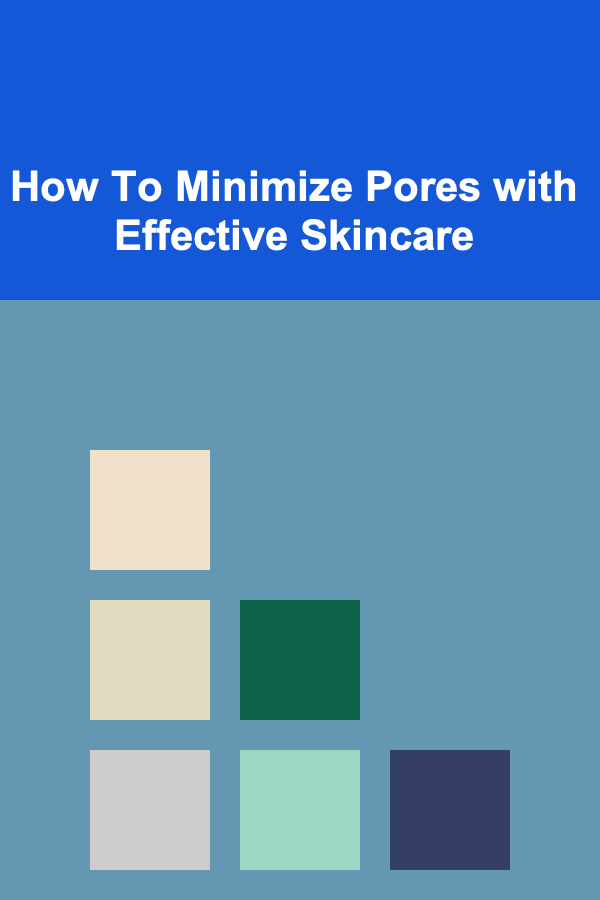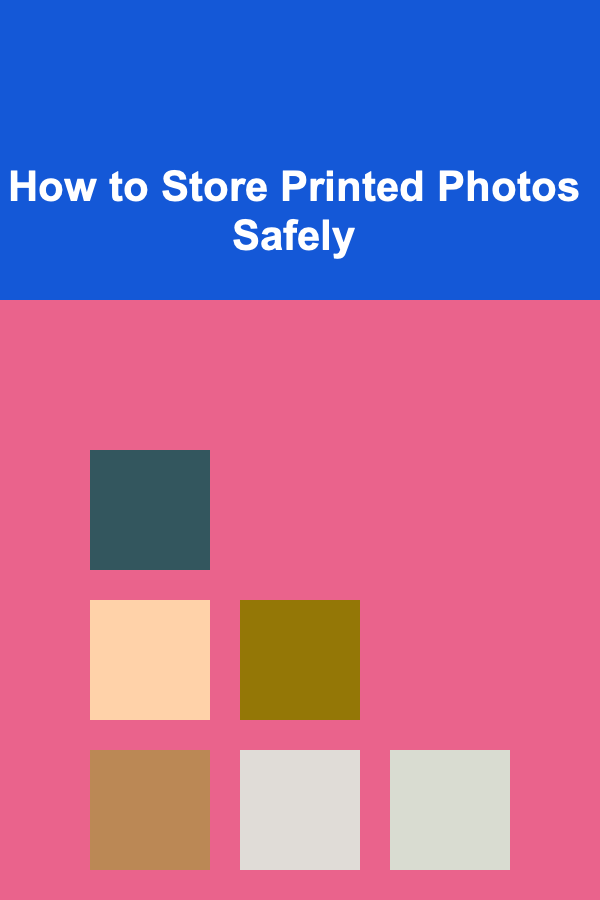
How To Minimize Pores with Effective Skincare
ebook include PDF & Audio bundle (Micro Guide)
$12.99$11.99
Limited Time Offer! Order within the next:

Pores are a natural and necessary feature of your skin. They allow the skin to excrete sweat, oils, and other substances to maintain a healthy balance. However, many people desire smaller, less visible pores for aesthetic reasons. Enlarged pores can make the skin look rough, oily, and uneven, often resulting from factors such as genetics, excessive oil production, aging, or sun exposure.
While it's not possible to permanently shrink pores, there are various strategies and effective skincare practices that can help minimize their appearance. In this article, we'll explore the science behind pores, the factors that contribute to their size, and provide a comprehensive guide on how to minimize them with the right skincare routine.
Understanding Pores: What Are They?
Pores are small openings in the skin that lead to hair follicles. Each pore contains a sebaceous gland that produces oil (sebum), which lubricates the skin and protects it from environmental stressors. Pores can be found all over the body but are most prominent on the face, especially on the nose, chin, and forehead --- areas known as the T-zone.
Pores vary in size due to several factors, including genetics, age, and lifestyle habits. When pores become clogged with oil, dirt, or dead skin cells, they can become enlarged. This is why keeping your skin clean and maintaining a proper skincare routine is essential to minimizing pore appearance.
The Anatomy of a Pore
A pore is made up of several layers and components, including:
- Hair follicle: The hair follicle is the root of your hair, from which it grows. The hair follicle is also where the sebaceous glands are located.
- Sebaceous gland: This gland produces sebum, which moisturizes the skin and prevents it from becoming dry.
- Sweat gland: Sweat glands are also connected to the pores, contributing to the regulation of body temperature.
When the sebaceous glands produce excess oil, the pores can become clogged, making them appear larger and more visible.
Factors That Contribute to Enlarged Pores
Several factors can contribute to enlarged pores, including:
1. Excessive Oil Production
The primary cause of enlarged pores is excessive oil production. Sebum is naturally produced by sebaceous glands to keep the skin hydrated and protected, but too much sebum can clog pores and cause them to stretch. This is most common for individuals with oily skin types.
2. Clogged Pores
When pores become clogged with dead skin cells, dirt, oil, and other impurities, they can expand and appear larger. Clogged pores can lead to blackheads and whiteheads, further exacerbating the appearance of enlarged pores.
3. Sun Exposure
Long-term sun exposure can damage the skin's collagen and elastin, both of which are responsible for keeping the skin firm and supple. When these proteins break down, the skin becomes less resilient, causing the pores to appear more noticeable.
4. Aging
As we age, our skin loses its ability to regenerate and produce collagen. This loss of elasticity can cause the skin to sag and stretch, making the pores appear larger. Additionally, the skin's natural oil production decreases with age, which can lead to dryness and an uneven texture.
5. Genetics
Genetics play a significant role in determining the size of your pores. Some people are naturally predisposed to having larger pores due to their skin type or family history.
6. Poor Skincare Habits
Failing to properly cleanse your skin or using harsh products can lead to a buildup of oils and impurities, clogging the pores. Over-exfoliating can also irritate the skin and contribute to enlarged pores.
Skincare Tips to Minimize Pores
While you can't permanently shrink your pores, there are many steps you can take to minimize their appearance through effective skincare practices. Here's a guide to help you maintain smooth, clear, and poreless-looking skin.
1. Cleanse Your Skin Regularly
Cleansing is the first and most important step in any skincare routine. Properly cleansing your skin ensures that oil, dirt, and makeup are removed from the pores. It's essential to cleanse twice a day --- once in the morning and once before bed --- to prevent clogged pores.
- Choose a gentle cleanser: Avoid using harsh cleansers that can strip your skin of its natural oils. Look for a cleanser that is suited to your skin type, whether oily, dry, or combination.
- Consider double cleansing: For individuals who wear makeup or sunscreen, double cleansing can be helpful. First, use an oil-based cleanser to remove makeup, followed by a water-based cleanser to wash away any remaining impurities.
2. Exfoliate Regularly
Exfoliating removes dead skin cells that can clog pores and make them appear larger. Regular exfoliation helps promote cell turnover and keeps the skin smooth. However, it's important to exfoliate correctly, as over-exfoliating can irritate the skin and worsen the appearance of pores.
- Physical exfoliants: Scrubs with abrasive particles can help exfoliate the skin but should be used gently to avoid damaging the skin.
- Chemical exfoliants: Alpha-hydroxy acids (AHAs) and beta-hydroxy acids (BHAs) are excellent options for exfoliating the skin. AHAs, like glycolic acid, work on the surface of the skin, while BHAs, such as salicylic acid, penetrate deeper into the pores to clear blockages and control oil production.
3. Use a Pore-Minimizing Toner
Toners are a great addition to your skincare routine as they help balance the skin's pH, tighten pores, and remove any remaining traces of impurities after cleansing. Look for toners with ingredients like witch hazel, which has natural astringent properties that help minimize pores.
4. Incorporate Retinoids into Your Routine
Retinoids are derivatives of vitamin A and are well-known for their ability to stimulate collagen production and accelerate skin cell turnover. By increasing the rate of cell turnover, retinoids prevent the buildup of dead skin cells and reduce the appearance of clogged pores.
- Start slow: Retinoids can cause irritation when first introduced into your skincare routine, so it's essential to start with a low concentration and gradually increase usage.
- Apply at night: Retinoids can make your skin more sensitive to the sun, so it's best to use them in the evening.
5. Hydrate Your Skin
Keeping your skin hydrated is essential for minimizing pore visibility. When the skin is dry, the pores can appear more pronounced. Use a lightweight, oil-free moisturizer that provides hydration without clogging the pores.
- Choose a non-comedogenic moisturizer: Look for moisturizers labeled as "non-comedogenic," which means they won't clog your pores.
- Use hyaluronic acid: Hyaluronic acid is a powerful hydrating ingredient that can help your skin retain moisture without feeling heavy or greasy.
6. Use Clay Masks
Clay masks are great for oily and acne-prone skin as they help absorb excess oil and deeply cleanse the pores. Clay masks can help minimize the appearance of pores by drawing out impurities and controlling oil production.
- Use once or twice a week: Overuse of clay masks can dry out the skin, so it's best to apply them once or twice a week.
- Look for kaolin or bentonite clay: These types of clay are known for their ability to absorb oil and purify the skin.
7. Protect Your Skin from the Sun
Sun exposure is one of the leading causes of enlarged pores. Prolonged exposure to UV rays damages collagen and elastin fibers in the skin, leading to sagging and an increase in pore size. Always protect your skin with sunscreen to prevent this damage.
- Use a broad-spectrum sunscreen: Make sure your sunscreen protects against both UVA and UVB rays.
- Choose a non-comedogenic sunscreen: If you have oily or acne-prone skin, opt for a sunscreen that won't clog your pores.
8. Consider Professional Treatments
If you're looking for more significant results, professional treatments can help improve skin texture and reduce the appearance of pores. Some of the most effective treatments include:
- Chemical peels: These treatments use acids to exfoliate the skin deeply, removing dead skin cells and stimulating collagen production.
- Microneedling: This procedure uses tiny needles to create micro-injuries in the skin, which helps boost collagen production and tighten pores.
- Laser treatments: Laser therapy can target the deeper layers of the skin, improving texture, tightening pores, and reducing the appearance of fine lines.
9. Stay Consistent
The key to minimizing pores is consistency. Pores don't shrink overnight, and it can take several weeks or even months of consistent skincare to see significant results. Stick to a routine that works for your skin type and be patient as you give your skin time to adjust.
Conclusion
While you can't shrink pores permanently, adopting a well-rounded skincare routine can significantly minimize their appearance. Cleanse your skin properly, exfoliate regularly, incorporate pore-tightening ingredients like retinoids and clay masks, and protect your skin from the harmful effects of sun exposure. With dedication and the right products, you can achieve smoother, more refined skin with minimized pores.
By understanding the factors that contribute to enlarged pores and implementing effective skincare practices, you'll be able to improve your skin's texture, appearance, and overall health. Remember, a consistent skincare regimen, combined with healthy lifestyle habits, is your best defense against enlarged pores.

How to Create a Checklist for Leadership Development Programs
Read More
How to Make Home Upgrades and Still Stay Within Your Budget
Read More
How to Store Printed Photos Safely
Read More
How To Understand Different Types of Outdoor Shelters
Read More
How to Discover Series with Mind-Bending Concepts
Read More
10 Tips for Diagnosing and Fixing Common Espresso Machine Issues
Read MoreOther Products

How to Create a Checklist for Leadership Development Programs
Read More
How to Make Home Upgrades and Still Stay Within Your Budget
Read More
How to Store Printed Photos Safely
Read More
How To Understand Different Types of Outdoor Shelters
Read More
How to Discover Series with Mind-Bending Concepts
Read More